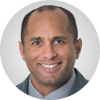Q: I have been hearing that based on current guidelines for dealing with neuromusculoskeletal conditions, active care is essential. Do you have examples of active care codes and are they services that acupuncturists may provide?
Passive modalities such as heat, cold or unattended electrical stimulation are services where the patient is required to do nothing to assist the treatment. Passive care is considered most useful in the early stages when the patient is exhibiting acute manifestations such as pain, spasm and inflammation. Most passive-care modalities have very similar outcomes and therefore are considered duplicative when multiple modalities are billed on the same visit. Note that massage may be considered passive, as it requires no activity from the patient and its purpose and outcome are similar, and potentially redundant, with other passive modalities.
Active care services require patient participation. These would include: 97110 therapeutic exercise; 97112 neuromuscular re-education; 97530 therapeutic activities; and 97150 group therapeutic activities. These services are often referred to as "rehabilitation," as they are specifically used to enhance "functional improvement," meaning either a clinically significant improvement in activities of daily living or a reduction in work restrictions.
Therapeutic exercise 97110: This is the application of exercise as a method to improve tone, strength, flexibility and endurance, and facilitate healing. Active care protocols are considered medically necessary for restriction of joint motion or loss of strength, functional capacity or mobility as a consequence from a specific disease of injury. Specific exercises should be listed, including type, method and goal. These could include stretching exercises, both static and facilitated. Specific exercises can be progressive resistance strength/endurance exercises such as isometric, isotonic and isokinetic. Long-term and short-term goals should be identified. The use of exercise is within the scope for acupuncture in many, if not most, states.
Neuromuscular reeducation 97112: Provided to improve balance, coordination, kinesthetic sense, posture and proprioception. Be aware this therapy is was initially designated for rehabilitation following stroke, surgery, fracture, etc., where the motor system needs to be re-patterned for normal activities. It also includes poor static or dynamic sitting/standing balance, loss of gross or fine motor coordination, and hypo-/hypertonicity of soft tissue. There usually is a form of repeated active movements under a variety of mechanical conditions. Examples include proprioceptive neuromuscular facilitation, Janda, Feldenkrais, Bobath, Alexander and cross crawl. Balance boards and similar equipment could be documented under this code. This service is typically not listed specifically under the scope of practice for acupuncture but may be interpreted and used under "exercise or rehabilitation."
Therapeutic activities 97530: This is a direct (one-on-one) procedure for dynamic activities to improve functional performance. Dynamic activities would involve repetitive movement or activities such as bending, lifting, reaching, carrying, catching, overhead activities and/or transfers. A progressive protocol is typical, increasing length and intensity of the activities. This service is typically not listed specifically under the scope of practice for acupuncture but may be interpreted and used under "exercise or rehabilitation." Note the codes 97110, 97112, and 97530 are 15-minute codes and all documentation of those services should include the time spent with each service.
Group therapeutic activities 97150: This includes any of the preceding services done in a group setting (two or more people) .
Pound for pound, active care is the most advantageous source of physical medicine procedures (with the exception of acupuncture) and has proven to give the best long-term outcome versus passive services alone. Active care gives the patient a fishing pole rather than just a fish.
Click here for more information about Samuel A. Collins.




